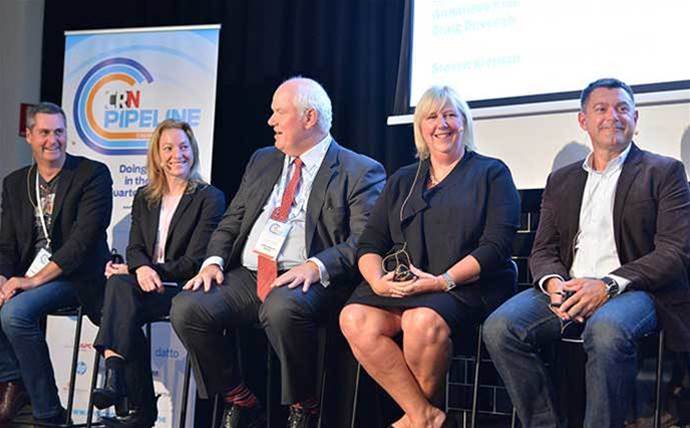Mergers and acquisitions continue to buzz in the channel and M&A remains a key strategy for IT company growth. But deals can be daunting prospects, with careful planning and people skills essential to ensure the journey doesn’t end in disaster.
At the CRN Pipeline conferences in Melbourne and Sydney, a panel of experts from the IT industry and beyond weighed in on their successes – and failures – in M&A.
Julie-Ann Kerin, chief executive of publicly listed CSG, has spent more than 20 years in venture advisory between Melbourne and San Francisco, and now runs the $250 million IT and print provider. CSG has been an active acquirer, most recently snapping up CRN Fast50 company R&G Technologies for $6.6 million. Kerin said the company sought out “bolt-on” acquisitions, where the acquired company offers either customers or capability. “It needs to be one of those two things,” she said.
“In terms of our selection criteria, the number one thing we look at before going any further is the people. We have to believe that the people culturally fit into our organisation, that they share our values, and that they share our objectives for the business. If we don’t get past that point, then we really don’t go any further.”
As a public company with an obligation to shareholders, CSG takes a critical eye to any potential deal. The CEO added that her company valued business leaders with energy, who were willing to proceed forward in partnership. “We would typically want people who are here for the journey, who see themselves as part of the business and have the energy to keep going mid-term. What we’re not attracted to is the tired business owner that just wants a way out.”

While a solid track record of revenue growth is important, earnings accretion is absolutely critical, said Stevens. “We’re constrained in how much we can pay by what the combined profitability of the acquired business, and what your own business is.
“If you are acquiring something that isn’t making the same sort of percentage – EBITDA or net profit – as you are, but you’re paying a similar valuation, then you’re really just diluting the value of your own company.”
Stevens warned of the “key person” risk. Once a founder has sold his or her company and pocketed a sizable payout, they might lose their dedication and drive. “In a lot of the businesses we acquire, there is a founder, and they are generally integral for the business. So the challenge is: how do we then take on that business while giving the founder many millions of dollars that generally tends to dilute their motivation?” Stevens said.
Recently emerging from his second company sale, Craig Deveson recommended building relationships early with those who might buy your business.
Deveson sold his first company to Cloud Sherpas, and only this year sold his second, CloudMGR, to US company Cloudability. “I’ve known the two founders [of Cloudability] for about four years. Start planning to meet your acquirers ahead of time,” he said.
“Talk to your competitors over a drink, because you never know whether you’ll be acquiring them or they’ll be acquiring you. It’s much easier to start that phone call or start that discussion if you’ve had a drink with that person, rather than a call through an investment bank or something like that.”





_(21).jpg&h=142&w=230&c=1&s=1)

.png&h=142&w=230&c=1&s=1)





.jpg&w=100&c=1&s=0)










